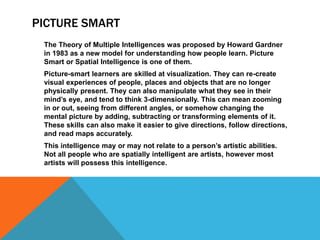
Imagine you’re sitting in a coffee shop, chatting about wildlife. You might ask, “What makes gnus tick?” It’s not just about their physical prowess; their social interactions and survival tactics paint a vivid picture of their intelligence. Just like humans, gnus have strategies for thriving in their environment. Let’s journey into the world of gnus to discover their smarts, behaviors, and how these traits help them survive in the wild.
Understanding Gnu Intelligence
Gnu intelligence can be tricky to define. It’s not just about problem-solving skills like a chimpanzee or the complex communication of dolphins. Instead, gnu smarts lie in their social behavior and adaptability. They may not solve puzzles, but their ability to navigate complex social structures and react to environmental changes is quite impressive.
For example, gnus often travel in large herds, which is a smart survival tactic. By staying together, they can confuse predators and increase their chances of survival. Their social structure is fascinating. Females often lead the herd, guiding it to food and water sources. This shows not just instinct but a level of social intelligence, as they communicate and make decisions together.
Social Learning and Group Dynamics
One of the most remarkable aspects of gnu behavior is their social learning. This means they observe and learn from one another, which is crucial for survival in the wild. When a leader in the herd finds food or detects danger, their reactions can teach the others about safe paths or good grazing spots.
You might be wondering how this compares to other animals. In some ways, it’s similar to how wolves or elephants operate. They rely on social bonds and learned experiences to thrive. This ability to learn from one another is a clear indicator of their cognitive skills, allowing them to adapt over time to changing environments.
Communication Skills of Gnues
Believe it or not, gnus have a language of their own! They use a range of sounds to communicate. From grunts to snorts, these vocalizations serve different purposes, such as signaling danger or expressing contentment. This vocal communication is essential for maintaining group cohesion and ensuring everyone is on the same page.
In addition to sounds, gnus also use body language to express themselves. For instance, a gnu might lower its head or quickly change direction to signal to others that something’s amiss. This non-verbal communication helps them respond swiftly in the face of threats.
The Role of Vocalizations in Survival
Imagine being in a crowded place and hearing a friend call your name. You’d instinctively turn to them, right? Gnues do the same! Their ability to recognize and respond to specific calls is crucial for survival. When one gnu detects danger, a well-timed call can alert the whole herd, prompting them to flee or hide quickly. It’s like they have their own emergency alert system!
This communication extends to young gnus learning from their mothers. Moms often make specific sounds to guide their calves. These early lessons can be vital, helping young gnus learn about predators and safe grazing spots before they face the challenges of the wild alone.
Problem-Solving and Adaptability
While gnus may not be known for advanced problem-solving skills, they showcase adaptability in remarkable ways. In the wild, changing circumstances often require quick thinking. Whether it’s finding fresh grazing areas during a drought or evading predators, gnus demonstrate the ability to adapt their behaviors for survival.
For instance, during the Great Migration, which involves vast herds moving across the Serengeti, gnus utilize their knowledge of the terrain to find water and food. They navigate their way through rivers and savannas, showcasing their understanding of seasonal changes and resource availability.
Herd Migration: A Smart Survival Strategy
The migration itself is an incredible example of collective problem solving. Gnues travel thousands of miles, with the entire herd working together to ensure everyone’s safety. They learn the routes over generations, passing down this knowledge to the younger members. This shared experience highlights their ability to adapt and thrive in a challenging environment.
Honestly, it’s like a massive team effort where every member plays a role. When faced with obstacles, whether it’s a river to cross or a predator lurking nearby, the group adapts together, illustrating a level of collective intelligence that’s truly impressive.
Emotional Intelligence in Gnues
It’s easy to overlook the emotional side of animals, but gnus have shown signs of what we might call emotional intelligence. They form strong bonds with one another, especially mothers with their calves. These relationships are crucial for nurturing and teaching young gnus about the world.
You might think of it like a community support system. When a member of the herd is distressed or injured, the group often rallies around to support and protect that individual. This sense of togetherness demonstrates a surprising level of empathy and compassion among gnus.
The Impact of Stress on Gnu Behavior
Interestingly, the emotional state of gnus can affect their behavior and decision-making. When under stress, whether from predator threats or environmental changes, a gnu’s ability to think clearly diminishes. This is significant for survival, as the herd must remain alert and cohesive during tough times. Understanding these emotional nuances gives us a deeper appreciation for their behavioral complexities.
So, how smart is a gnu? While they might not ace intelligence tests or perform tricks like dogs, their intelligence shines through in their social structures, communication, adaptability, and emotional connections. Gnues are a reminder that intelligence comes in many forms, not just the ones we typically celebrate in more traditionally “smart” animals.
As we continue to study gnus and their behaviors, we’re uncovering the fascinating nuances of their lives. It’s clear that beneath that shaggy exterior lies a creature with a rich tapestry of intelligence, one that plays a crucial role in the delicate balance of the African ecosystem. Next time you see a gnu, take a moment to appreciate the complex world that they navigate daily. There’s a lot more to them than meets the eye!
